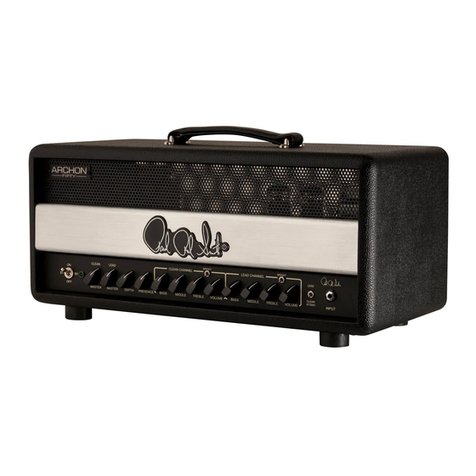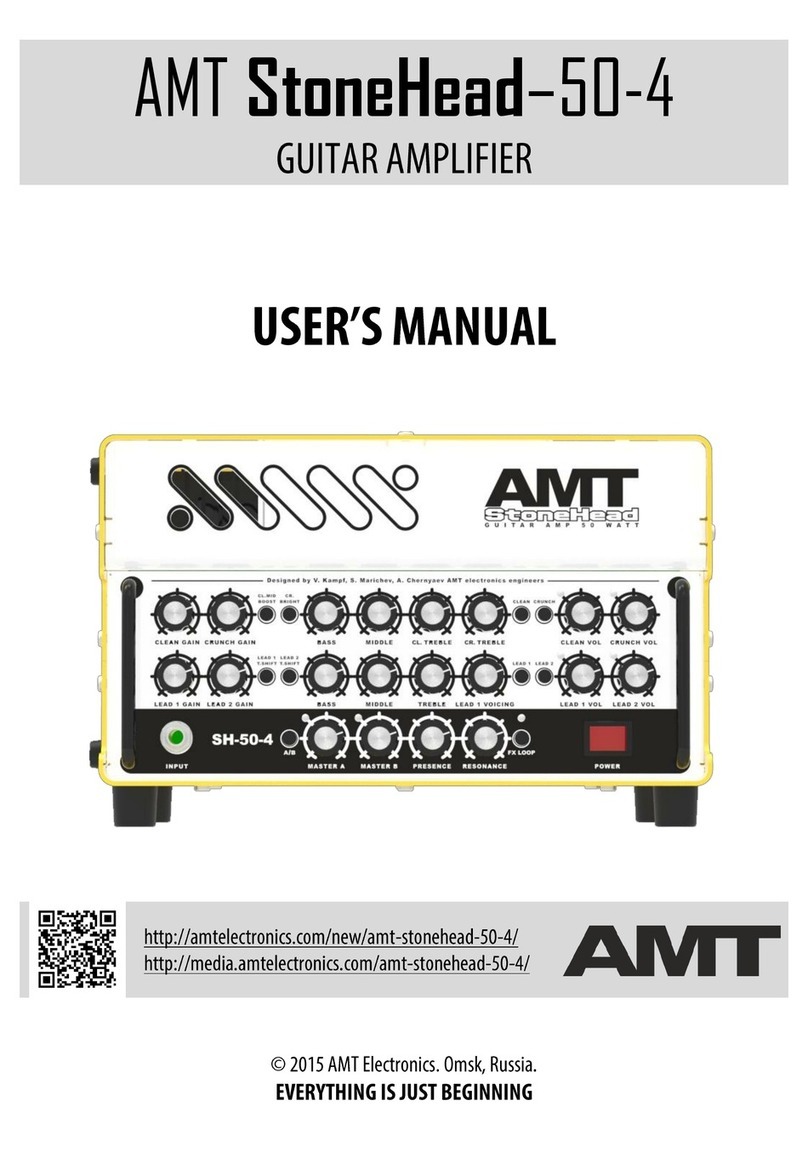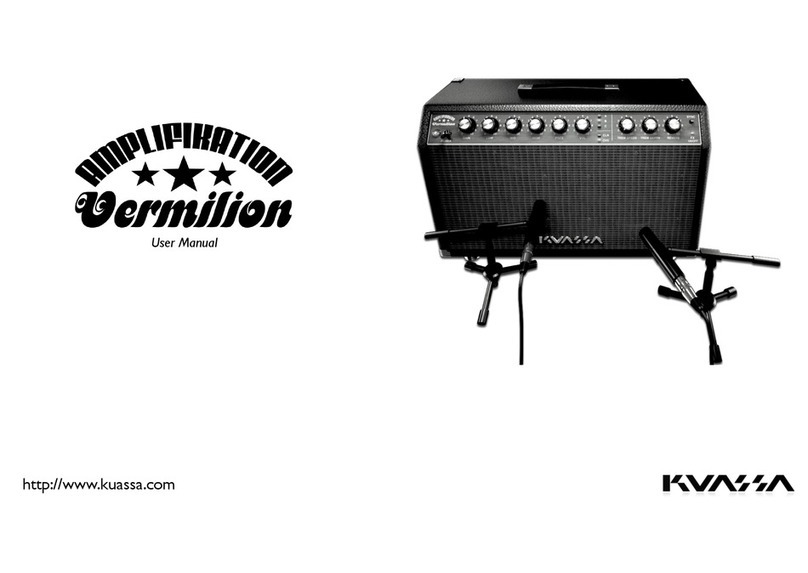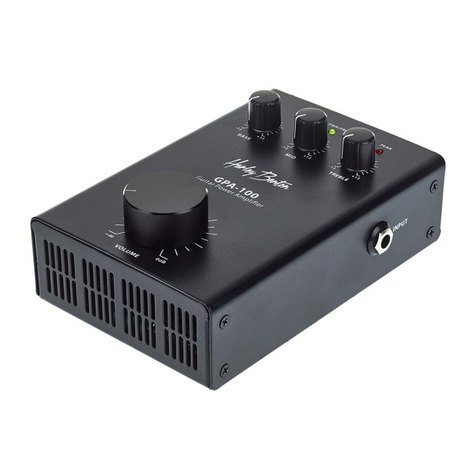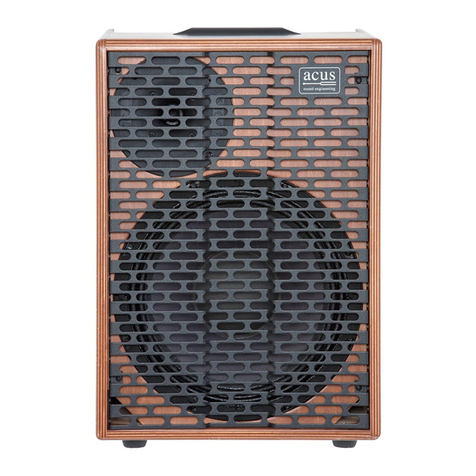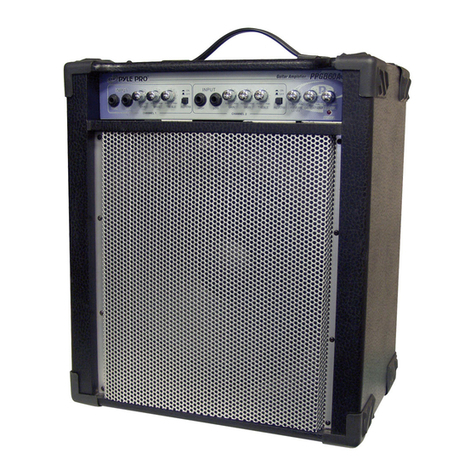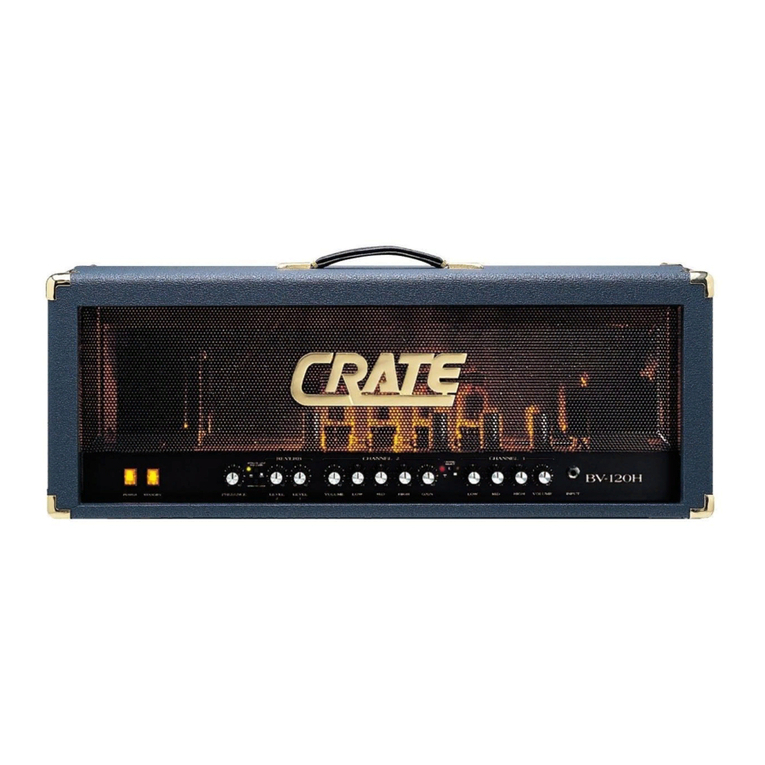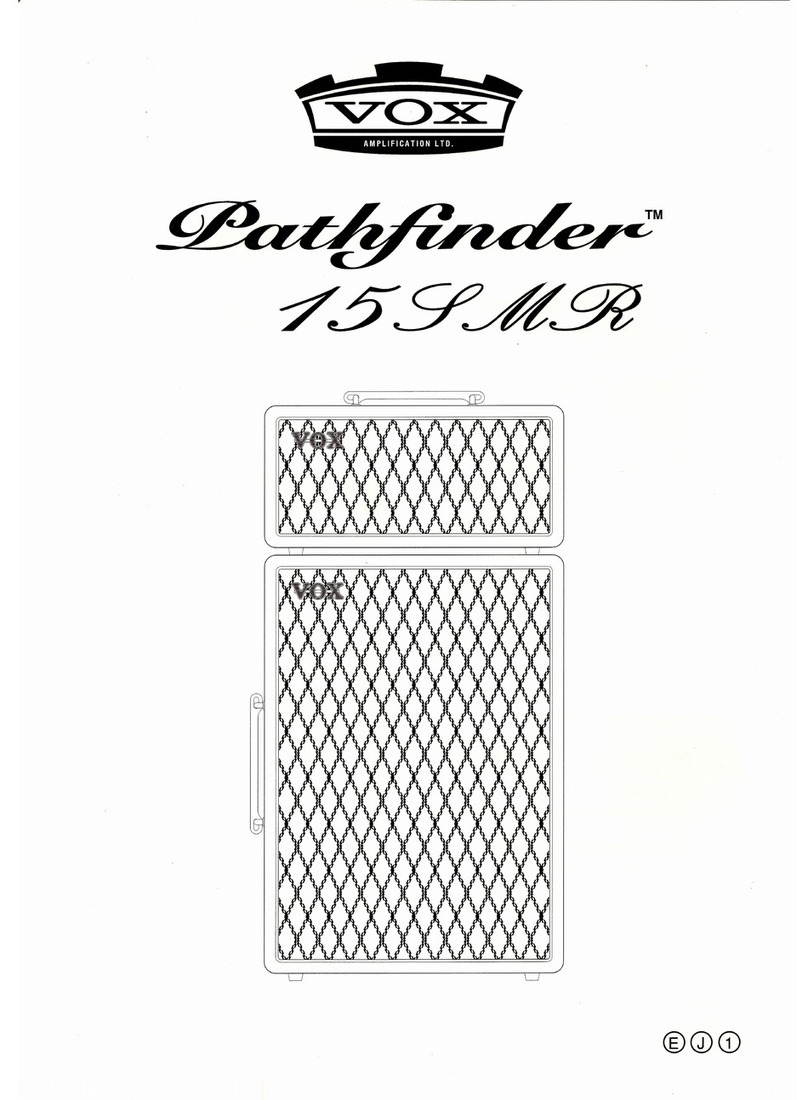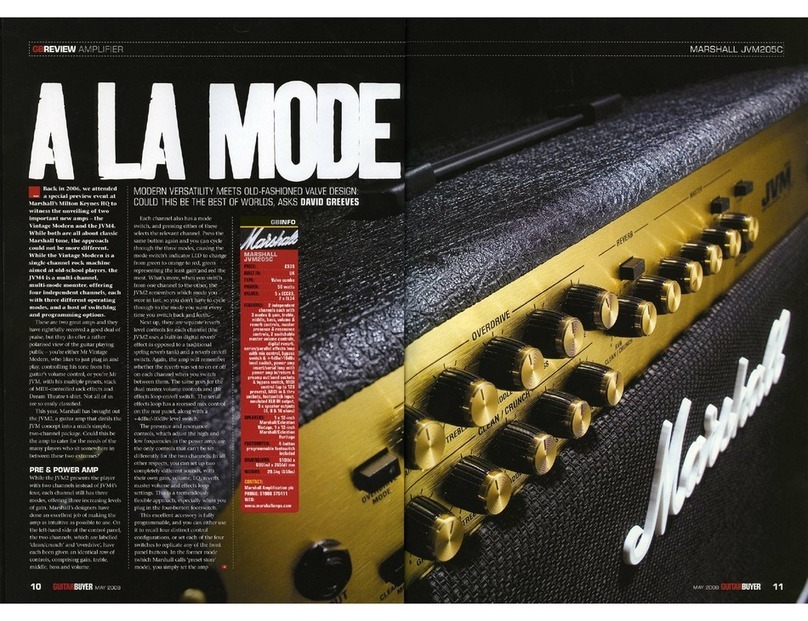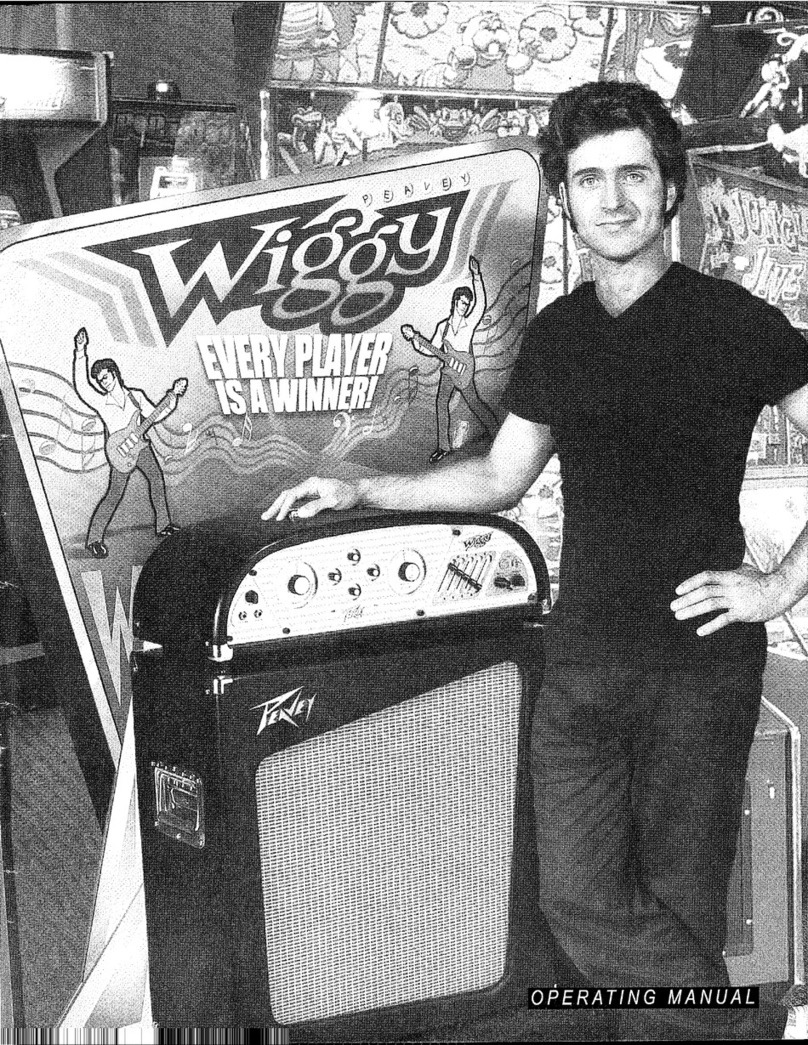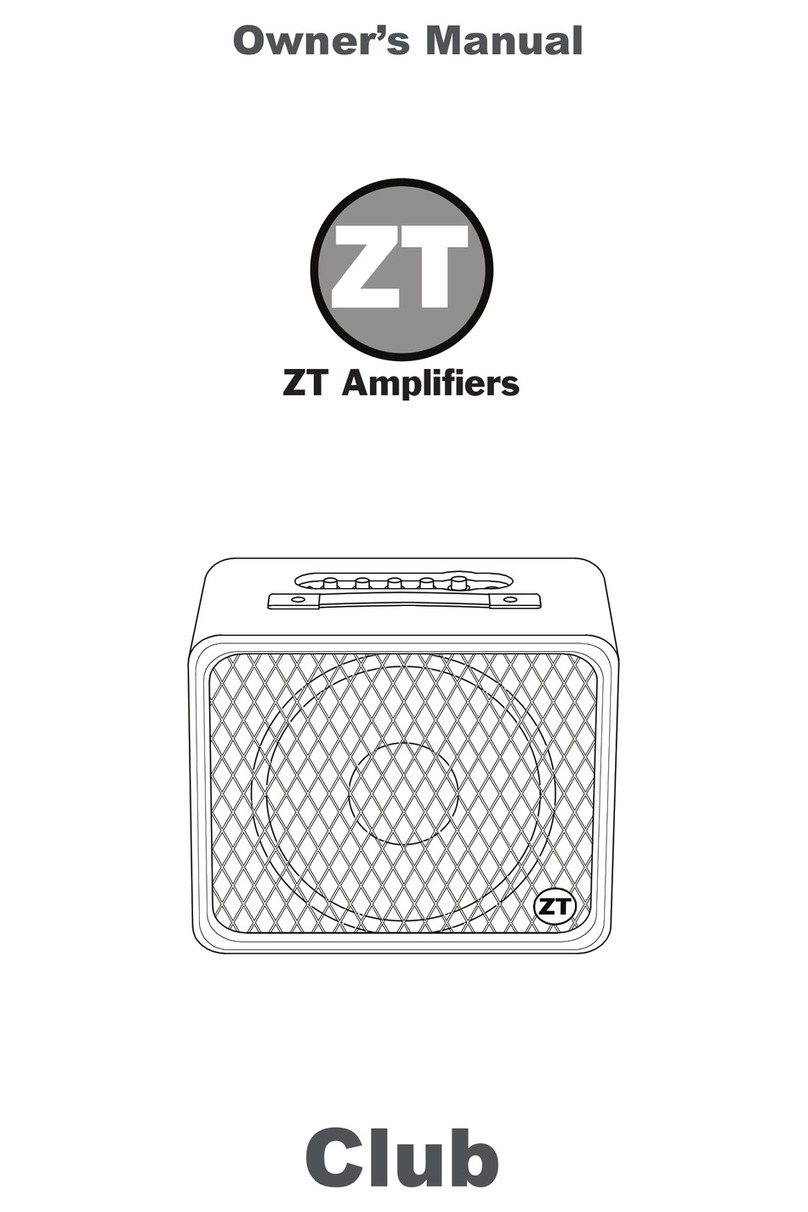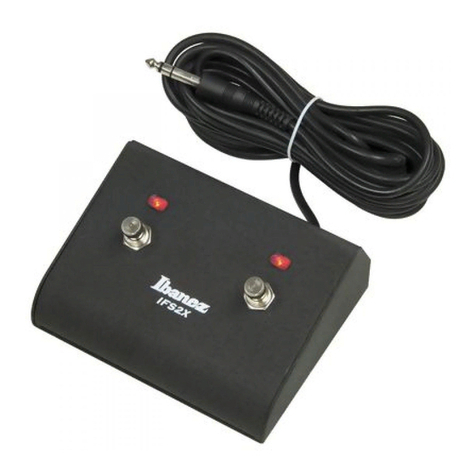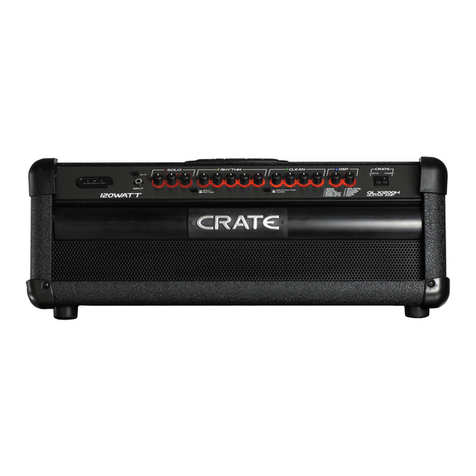Using your PRS Amplifier
IMPORTANT: Before using your amplifier, refer to the IMPORTANT SAFETY
INSTRUCTIONS insert supplied with the product.
Powering Up:
1. Make sure your speaker cabinet is connected to the correct speaker output
impedance jack with a high quality speaker cable. Do not use guitar cords.
2. Make sure the power cord is connected to the correct earthed/grounded outlet.
3. Make sure there are at least 12 inches of clearance behind the amplifier to allow for
proper cooling. Never place the amplifier against a wall or other equipment, and
keep it clear of other heat sources, such as other amplifiers or stoves. Make sure
there are no flammable items, such as curtains, behind the amp. Do not drape items
over the amps that can prevent proper cooling. Do not set drinks or other liquids on
top of the amp that can spill into the amp.
4.To increase the life of the tubes, set the “Standby” switch to the STANDBY position
before powering on. Turn the POWER switch on and let the amplifier warm up for
2 minutes before seing the standby switch to “ON”. If this is the first time you are
turning on the amp, check to see if all of the tubes are glowing.
5. Plug in the guitar cable, turn the volume knob down, and turn the standby switch
on and wait a few seconds for the bias to sele. Bring the volume up and play some
tunes.
This equipment is capable of very high sound pressure levels. Prolonged exposure
may cause hearing damage.
This equipment contains no user-serviceable parts. Refer all repairs to qualified
service personnel.
Ensure that the mains plug is easily accessible to allow the unit to be switched o.
Only connect this unit to an earthed/grounded supply socket.
THIS UNIT IS CLASS 1 CONSTRUCTION AND MUST BE EARTHED/GROUNDED!
Sonzera 50 Amplifier Front Panel Controls
Input: ¼” Standard Mono Guitar Cable.
Gain/Clean Selector: Select your channels when not using the footswitch. When
footswitch cable is inserted, the panel channel selector is overridden.
Channel Controls: The Clean (Gain) Channel is equipped with a Volume (Drive), Treble,
Middle, Bass, Reverb and Master (Level) controls. Use the Volume (Drive) control to
adjust the level of preamp gain. Use the Master (Level) control to adjust the overall
channel volume. Adjust the tone controls to taste.
Bright Switches: These switches allow you to set the overall brightness of each
channel.
Presence Control: This control is global and aects both channels. It controls the high
end response at the power amp area of the circuit.
Sonzera 20 Amplifier Front Panel Controls
Similar to the Sonzera 50 except:
The Clean Channel is equipped with a Volume, Treble, and Bass control only. The Gain
Channel has a Drive, Level, Treble, Middle and Bass control and Bright switch. Presence
and Reverb are global and aect both channels.
Rear Panel Controls
Mains Socket: Always use the mains lead supplied. Your sales outlet can provide
a lead suitable for your country. Always disconnect the equipment from the
mains and ancillary units before moving.
Fuses: This amplifier is equipped with multiple accessible fuses. Replacement fuses
must be of the same type and rating as indicated. Failure to comply may result in
permanent damage to the product, and/or create a safety hazard. Always disconnect
the equipment from the mains supply before replacing a fuse.
Mains Fuses: These are located in the mains socket.
B+ Fuse: This fuse is located next to the mains socket and is accessible via a thumb-
turn fuse holder.
Power On/O and Standby Switches: Power on the amp first with the Standby Switch
in the OFF position. This eectively allows the tube filaments to warm up without
applying high voltage to the tubes. Wait about 2 minutes, then switch the Standby
Switch in the ON position to play the amp. The Standby can be used when not playing
the amp for several minutes.
Eects Loop: This amplifier features a series eects loop that is integral to the overall
sound of the amp. Connect the Send jack with a 1/4” mono instrument cable to the
input of your pedal(s). connect your pedal(s) output to the Return jack also using a 1/4”
mono instrument cable. To minimize your cables picking up hum, arrange the cables
together for the first few feet away from the amp, and move them away from the
power transformer and mains power cable.
Safety Symbols: The following symbols mean:
Warning: read instructions to understand possible hazard
Danger: electrical shock hazard
Bias Jacks: These jacks measure the power tube current draw in milliVolts. 1mV = 1mA.
Review the information on the back of this manual for guidance on replacing tubes.
Biasing and tube replacement should be performed only by a qualified technician. Bias
adjustments can be made with a small (jeweller’s) Phillips-head screwdriver.
Footswitch Jack: Connect the included PRS FS2S footswitch to control channel
switching and reverb on/o. Do not use other footswitches as they can possibly
damage the amp. When aached, the footswitch bypasses the functionality of the
panel switch to select channels. There are no special positions of switches on the amp
to allow the footswitch to function properly.
Speaker Jacks: These are the main outputs for your combo speaker or cabinet(s).
There are 5 total jacks to use. The 4 Ohm and 4 Ohm Extension jacks are wired in
parallel, as are the 8 Ohm and 8 Ohm Extension jacks. There is also one 16 Ohm jack.
Determine beforehand what your total speaker loading will be and use the appropriate
jacks. Never use more than one jack of dierent ohms. It is best to always use speakers
with the same ohm ratings. Examples of loads include two 8 ohm speakers combine
for 4 ohms. Use the 4 ohm jack and 4 ohm extension to connect the speakers in this
instance. Two 16 ohm speakers or cabinets would combine to create an 8 ohm load, so
use the two 8 ohm jacks in this instance. Failure to correctly match the speaker load to
the appropriate output jacks can cause tube socket arcs, blown power tubes, or failure
of the amp.





